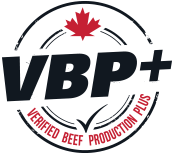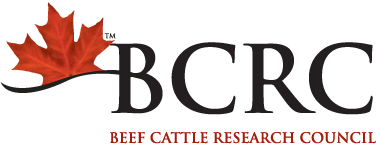Getting involved with certification programs and supply chains takes commitment from beef producers. The time, effort, and money required do not go unnoticed, and Verified Beef Production Plus (VBP+) is committed to advocating for producers to receive value back in return for their investment.
Producers can get involved with the VBP+ program in two ways. Getting trained allows producers to stay up to date on best management practices supported by current research, Canadian regulations, and modern experience from efficient and profitable ranches. For those seeking further involvement in the program, certification follows naturally.
To get certified with VBP+, producers gather six months of production records and make changes on their operation to match the requirements of the VBP+ Standard. A provincial coordinator will go through a pre-audit preparation process with each producer to ensure successful certification. Then, a third-party auditor, who is often a producer themselves, will come out to visit the farm to verify that required practices from the VBP+ standard are being implemented. Producers will not fail an audit if they do not meet all requirements. Instead, a corrective action request will be issued with a timeline for change to be made, encouraging continuous improvement.
Once a producer has successfully completed their audit, they are responsible for maintaining the management and record-keeping requirements of the VBP+ program. Each year, the operation must complete a renewal event to demonstrate continued adherence to the VBP+ Standard. In years two and four of the five-year audit cycle, producers submit records to be assessed according to the requirements of the program. In years three and five, producers self-declare that they are maintaining the Standard on their operation.
For many producers, getting involved in VBP+ training or certification has inherent benefits. Changing management practices often increases efficiency and can aid your bottom line. For example, making sure that animal health products like vaccines and antibiotics are delivered effectively can reduce time and money spent on treating sick cattle. Many VBP+ producers also report that record-keeping indirectly increases efficiency on their operation by keeping track of management decisions so that they can be changed in the future to optimize efficiency and profitability.
However, VBP+ training and certification clearly require a time commitment from the producer. Making changes on an operation, keeping records, and completing administrative work to maintain certification all require time – something that beef producers are short on. As well, training and certification both involve a financial commitment from the producer. Like time, money is not something that most beef producers can easily offer.
VBP+ recognizes the investment that producers make into the program and sees the benefits that producer participation offers to public trust and sustainable beef supply chains. Therefore, it is a major goal of VBP+ to seek tangible value that can be offered back to producers for their investments.
A major avenue that allows VBP+ to seek out producer benefits is transformation of producer efforts into data. To producers, the database of certified operations may seem like nothing more than a list. But to sustainable beef supply chains, this information is a lifeline.
In order to make label claims about sustainable beef, sellers need to construct a verifiable chain of custody that tracks animal movements from farm to farm. The data regarding which beef operations are certified and when their certification is active is integral to making this chain of custody viable.
Without producer participation in certification programs, sustainable beef supply chains could not exist. VBP+ leverages producer data to access these supply chains, and in many cases, secure value for primary producers.
For example, in 2017, Cargill piloted a project with the Canadian Roundtable for Sustainable Beef (CRSB) and other partners, including VBP+, to validate a certified sustainable supply chain and allow product to be sold with the certified sustainable label claim. Cattle that made their way through the supply chain entirely on CRSB certified operations can produce beef that is eligible for this program. In return for being certified, retailers, through Cargill, provides an incentive per head back to each producer involved in the life cycle of the animal. Since VBP+ is a delivery agent for CRSB, producers certified with VBP+ are automatically certified with CRSB and can receive payments through this program.
Other stakeholders see value in producer certification even without being directly involved in the beef supply chain. Last year, Farm Credit Canada started offering the Sustainability Incentive Program, delivering a payment to clients certified with CRSB.
Programs like these are examples of stakeholders recognizing the investment required from a producer to be involved in programs like VBP+. These programs all require data from VBP+ for verification. By leveraging the value of producer data, VBP+ can secure tangible benefits for producers.
This opportunity is not limited to certification. In the past, provincial governments (such as the Government of Alberta) have offered incentives to producers trained with VBP+ in the form of funding to purchase new farm equipment related to the program. For example, until March 15, 2022, in Saskatchewan, VBP+ trained producers can apply to receive up to $2,500 to cover 50% of costs for equipment such as new cattle handling systems, calving cameras, or vaccine coolers. Certified producers can apply for up to $15,000. This program also requires VBP+ producer data to verify eligibility.
Value arising from the VBP+ program can come in many different forms, but the universal factor tying producer incentive programs together is the value of VBP+ producer data. Without producer participation and investment, beef sellers could not make label claims and financial institutions could not show commitment to encouraging sustainable production.
Stakeholders need producers, and VBP+ transforms the hard work of producers into a usable tool for partners. Using this tool to leverage incentives for producers is key to ensuring that producers maintain participation in the program, and to expanding buy-in moving forward.



